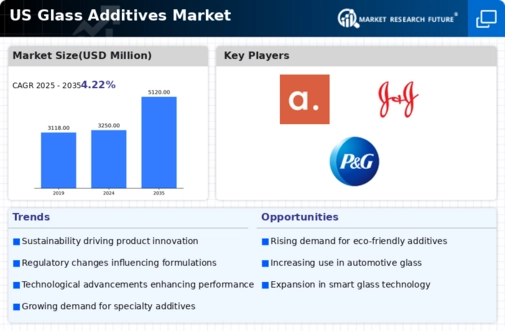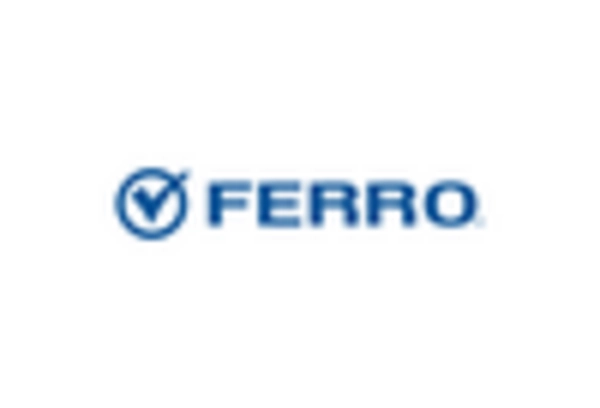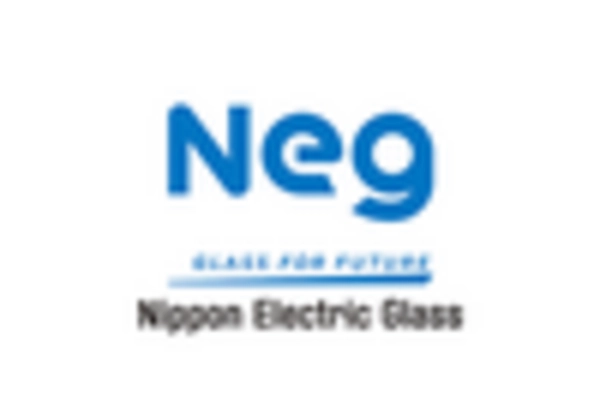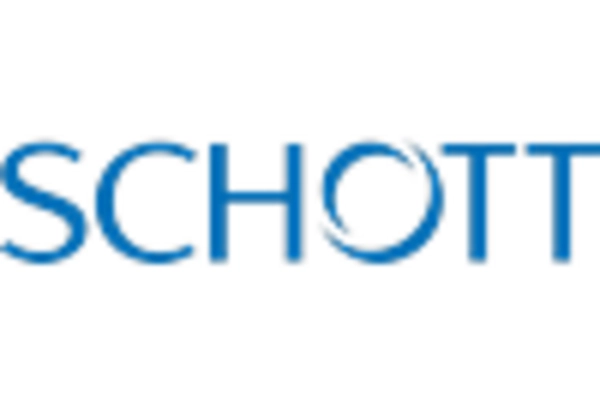Growth in Construction Activities
The ongoing expansion in construction activities across the United States is significantly impacting the glass additives market. As urbanization accelerates, the demand for architectural glass, which often incorporates additives for improved performance, is on the rise. The construction sector is projected to grow at a CAGR of around 4.2% through 2026, which is likely to drive the need for glass additives that enhance durability, energy efficiency, and aesthetic appeal. Additives such as colorants and UV stabilizers are increasingly utilized to meet the diverse requirements of modern architecture, thereby contributing to the overall growth of the glass additives market.
Increased Focus on Energy Efficiency
The glass additives market is witnessing a heightened focus on energy efficiency, particularly in the context of building materials. With rising energy costs and environmental concerns, there is a growing demand for glass products that contribute to energy savings. Additives that enhance thermal insulation properties are becoming increasingly important in the construction of energy-efficient buildings. For instance, low-emissivity coatings and insulating glass units are gaining traction, which necessitates the use of specific additives to achieve desired performance levels. This trend is expected to drive the glass additives market as manufacturers respond to the demand for sustainable and energy-efficient solutions.
Rising Demand for Specialty Glass Products
The glass additives market is experiencing a notable surge in demand for specialty glass products, driven by their applications in various industries such as automotive, construction, and electronics. Specialty glass, which includes products like tempered glass and laminated glass, requires specific additives to enhance properties such as strength, thermal resistance, and optical clarity. In the automotive sector, for instance, the demand for lightweight and durable glass is increasing, leading to a projected growth rate of approximately 5.5% in the glass additives market by 2026. This trend indicates a shift towards high-performance materials, which necessitates the use of advanced glass additives to meet stringent industry standards and consumer expectations.
Regulatory Standards and Compliance Requirements
The glass additives market is significantly influenced by regulatory standards and compliance requirements that govern the use of materials in various applications. In the United States, stringent regulations regarding safety, environmental impact, and product performance are prompting manufacturers to adopt specific additives that meet these standards. Compliance with regulations such as the Clean Air Act and the Resource Conservation and Recovery Act is essential for market players. As a result, there is a growing emphasis on the development of eco-friendly additives that align with regulatory expectations. This focus on compliance is likely to shape the future landscape of the glass additives market.
Technological Innovations in Glass Manufacturing
Technological innovations in glass manufacturing processes are playing a crucial role in shaping the glass additives market. Advances in production techniques, such as the use of automated systems and improved melting technologies, are enhancing the efficiency and quality of glass products. These innovations often require specialized additives to optimize performance characteristics, such as viscosity and melting point. The integration of smart technologies in glass production is also leading to the development of new additive formulations that cater to specific applications. As manufacturers seek to improve production efficiency and product quality, the glass additives market is likely to benefit from these technological advancements.
















